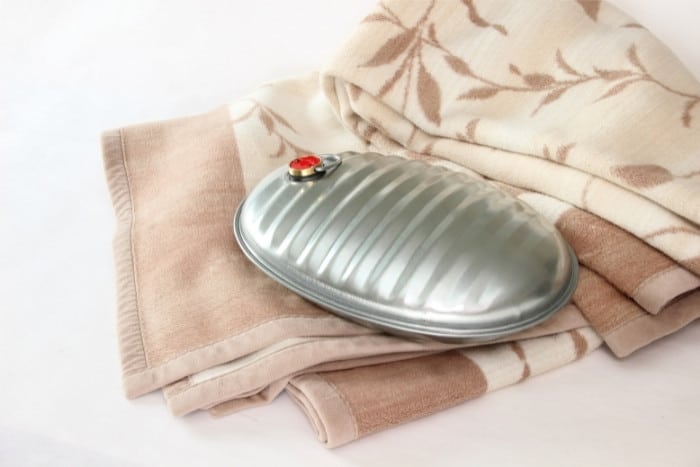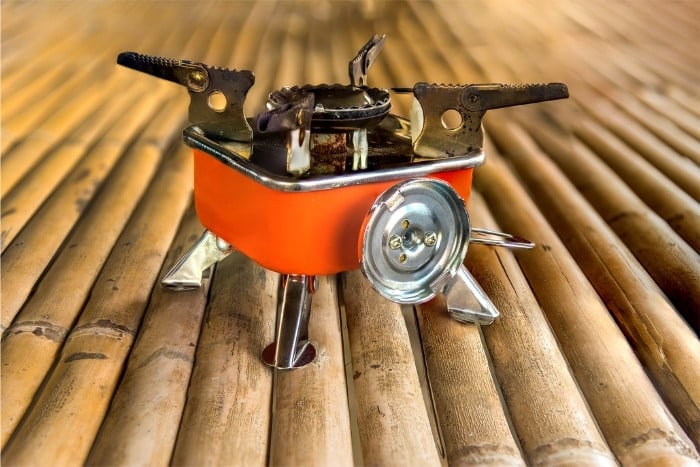You’re venturing into the great outdoors. Maybe this is your first time camping, or you’re a veteran camper. Either way, you want to make sure you’re going to be warm inside your tent. You need to ask yourself: how can I heat my tent and keep warm?
Get your tent heated by building insulation, using a heat source inside the tent, connecting sleeping bags, or pitching your tent where the sun shines. You can keep warm inside your tent by eating before bed, packing on the layers, or changing out of those sweaty day clothes.
For more top tips on heating your tent and ways you can keep warm once you’re inside, check our list below.
12 Ways To Heat Your Tent
Depending on your camping situation, there are several ways to heat your tent with or without electricity.
Some of the ideas below can work together to maximize heat (insulation and hot water bottles), while others are not necessarily together (propane and electric heaters).
Check out what you think will work for you.
1. Hot water bottles
A reliable hot water bottle is a great way to heat your tent. Pour hot water into the hot water bottles; they work immediately to start heating you and your tent.
If you don’t have a standard hot water bottle, you can use plastic water bottles. Fill the bottles with cold water and place them near a fire to heat them.
You don’t want to place the bottles over the fire, which will melt the plastic. Once the water bottles are warmed, you can place them around your tent.
Make sure the lids are tight; otherwise, you risk getting your tent wet which will only make it colder.

2. Electric tent heaters
If you have access to electricity, electric heaters can be a quick and efficient way to heat your tent. If you are going to be using an electric tent heater, there are a few things that you need to keep in mind.
It’s important to purchase an electric heater that is suitable indoors to avoid the risk of a fire. Ensure your heater is placed away from the tent’s walls to avoid the heater melting anything nearby.
Place the electric heater near the center of the tent and keep it on a low setting, so it doesn’t overheat.
If you have a battery-operated fan, you can point it towards the ceiling of your tent to circulate the warm air and prevent it from escaping.
A bonus is that these heaters are lightweight, making them easy to transport. But given that they’re so light, you need to ensure that the heater is properly grounded.
Make sure that the cord is not frayed or damaged in any way. And you should never leave the heater unattended while it is on.
Luckily there are electric heaters that come with overheating and tipping over protection. This means they will automatically switch off before they’re likely to cause any damage.
Finally, when you are finished using the heater, ensure it is turned off and unplugged.
3. Propane heaters
If you do not have electricity, you can use a propane heater. Like an electric heater, propane can quickly warm your tent. However, it is not without some caution.
If you are purchasing a propane heater, you must ensure it can be used indoors. Propane heaters have somewhat of a bad reputation, and that is why you must be aware of the risks when buying them.
You don’t want your tent to be cooking with you inside it. Propane is a clean-burning fuel that is safe to use indoors and produces very little odor.
They’re also relatively inexpensive and can be found at most hardware or camping supply stores.
Mr. Heater makes reputable heaters and they also make them in various sizes, so you can always find one that can heat your whole tent.
You can also buy a carbon monoxide monitor if you have the budget. Some propane heaters have tipping, overheating, and automatic timer shut-off features.
It’s also a good idea to check connections and hoses for potential gas leaks.
4. Heating rocks
Heating rocks may seem like a rustic method of heating your tent, but a rock’s high density can retain an incredible amount of heat for its size.
You can heat the rocks by placing them on an open fire, and once they have heated through, place them in a metal container inside the tent.
Make sure you let the rocks cool slightly before taking them off the fire. Once inside the tent, it will take heated rocks 2-3 hours to cool off completely.
If you plan on using this method to heat your tent, collect enough rocks to last the entire night.
It is also important to have a way to insulate the metal container so the heat does not escape and cool the rocks too quickly.
5. Candle lantern
Candle lanterns are small lanterns that a candle is placed into to create heat. A candle is usually quite small, so as you can imagine, these lanterns will only produce a small amount of heat.
However, if you are in dire need, this is an option if you need to heat your tent. It also produces a small amount of light, so you can save your torch battery.
A safety tip for using a candle lantern is not to use it while you sleep. It is a fire hazard, so you must keep an eye on it once it has been lit.
If you’re looking for some awesome candle lanterns, our article on the Best Candle Heaters For Camping will definitely help you!
6. A Camping Stove
If you’re using a camping stove to heat your tent, make sure the stove is placed on a level surface and that the tent is well-ventilated. Place a layer of rocks or sand around the stove to help reflect the heat.
Start by lighting the stove and then placing a pot of water on it to boil. Once the water is boiling, remove the pot from the heat and place it in your tent.
Be careful not to touch the hot pot with your bare skin. You can also use the stove for cooking food or warming up drinks.

7. Buddy up
Connecting sleeping bags is handy when traveling with friends or a partner. Body heat is a great way to warm your tent.
Some sleeping bags can connect, so you’ll want to zip open both bags completely and unfold them.
You then want to lay the sleeping on top of one another and zip them up together starting from the middle of the foot of the sleeping bag.
If you don’t fancy zipping up with your mates, it is handy to share tents instead of having your own separate ones.
Even if you’re not in the same sleeping bag, you can still generate warmth under the same roof.
8. Electric blanket
Electric or heated blankets are another way to heat your tent thoroughly. You will need access to electricity to use them, but they are a certified way to ensure you stay warm throughout the night.
There are a variety of electric blankets that you can purchase. Some are made from soft fleece fabric or are built to be lightweight. Others can be as big as your tent.
Other forms of electric wear can equally heat your tent, such as electric pillows or even electric vests if you get a particularly cold chest!
9. Heat packs
Heat packs are a camping essential I swear by. They are a lightweight and fast-acting way to heat you.
Heat packs could be used to heat a tent; however, their size makes them much more efficient at heating cold parts of your body.
The most common heat packs are disposable hand warmers which can be ‘clicked’ or ‘popped’ and then placed near your hands, face, or feet to keep you warm in your tent.
You can purchase reusable heat packs, but these would need a microwave to heat them, and if you’re camping, it may be unlikely that you have one nearby.
10. Pitch your tent over a burned-out fire
It may sound ludicrous to pitch your tent over a burned-out fire, but this is an extremely effective way to heat your tent. However, it does require preparation. First off, you’ll need to use a coal fire.
Hot stones retain heat for longer, which is more effective than a wood fire. Next, you’ll have to plan when you’re putting out your fire as you will have to give sufficient time for it to cool before you go to bed.
Finally, putting a couple of layers of dirt over the fire is helpful to cool it slightly faster and keep your tent from getting super dirty.
It is cool enough to place your tent over it when you can touch the dirt on top of the fire.
11. The Sun
A great way to heat a tent is to choose its position carefully.
If you pitch your tent where the sun will hit it in the morning or last thing at night, you can ensure that your tent will heat with the first or last rays of light.
However, you can have too much of a good thing, and while the sun is a free source of heat, it can’t be turned on and off.
On several occasions, I have pitched my tent in direct sunrise view and been woken at 5 am, practically boiling in my sleeping bag. Consider this when using the sun as your source of heat.
12. Insulation
No matter how much heat you manage to produce within your tent, if you can’t hold that heat properly, then it’s a wasted effort. This is where insulation is critical.
The first line of defense is to have a suitable tent built for winter camping. But aside from this, there are several ways to insulate your tent.
You can start with the roof. Placing a tarp over the roof of a tent acts as another layer against the cold. Just remember to always leave space for a little ventilation.
Next, you can insulate the walls of your tent with bubble wrap. You can ensure your tent will retain your body heat by attaching it with duct tape.
Finally, you can purchase a tent carpet, a great way to stop the ground from stealing your body heat. When insulating your tent, you must always ensure a ventilation gap.
Remember, you need oxygen!

Conclusion
There are many ways to heat a tent, but the most important thing is to ensure proper insulation and a good winter tent. Without proper insulation, all the heat you generate will be wasted.
There are several ways to insulate your tent, but remember to always leave space for ventilation, so you don’t suffocate. Heating your tent and keeping warm inside is a challenge every camper must face.
However, with these tips and ideas, your outdoor adventure can begin with the assurance that you will keep warm wherever you are.
